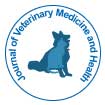Наша группа организует более 3000 глобальных конференций Ежегодные мероприятия в США, Европе и США. Азия при поддержке еще 1000 научных обществ и публикует более 700 Открытого доступа Журналы, в которых представлены более 50 000 выдающихся деятелей, авторитетных учёных, входящих в редколлегии.
Журналы открытого доступа набирают больше читателей и цитируемости
700 журналов и 15 000 000 читателей Каждый журнал получает более 25 000 читателей
Индексировано в
- Google Scholar
- ICMJE
Полезные ссылки
Журналы открытого доступа
Поделиться этой страницей
Абстрактный
Arsenic Induced Alternation in Animals by its Toxicity
Hina Ayub
This study assessed the developmental and behavioral effects of chronic arsenic exposure in animals. Therefore,the current research is to study the effects of arsenic trioxide on nephrotoxicity, hepatoxicity, and nephrotoxicity.Attempts to monitor the effect of arsenic are based on extensive literary research, with special emphasis on thelatest works. Arsenic is a carcinogen to both humans and animals. Arsenicals have been associated with skin, lung,and bladder cancers of the skin, lung, and bladder. Arsenic (As) is classified as a metalloid and exhibits both metallicand nonmetallic properties. It is found in ore and crust rocks with average density. It exhibits a complex chemistry,occurring in four different valences (-III, O, III and V), and in many different chemical forms and it has these beingused for a wide variety of industrial and agricultural purposes. Arsenic oxide is the most important arsenic compoundused in industry and is used to synthesize other inorganic and biological weapons. Arsenic trioxide is now used totreat acute promonocytic leukemia. Absorption occurs primarily through ingestion in the small intestine, althoughless absorption occurs through skin contact and respiration. Acute arsenic poisoning was initially associated withnausea, vomiting, abdominal pain, and severe diarrhea, and peripheral neuropathy was reported. Chronic arsenicpoisoning can cause multisystem disease. Affects signaling pathways by being able to activate proteins such asERK2, p38, and JNK as shown in mammals. A comparison between the phosphorylation sites of these proteins isperformed to determine whether they are observed in water and in mammals
Журналы по темам
- Биохимия
- Ветеринары
- Генетика и молекулярная биология
- Геология и науки о Земле
- Еда и питание
- Иммунология и микробиология
- Инженерное дело
- Клинические науки
- Материаловедение
- медицинские науки
- Науки об окружающей среде
- Общая наука
- Сельское хозяйство и аквакультура
- Социальные и политические науки
- Уход и здравоохранение
- Фармацевтические науки
- Физика
- Химия

 English
English  Spanish
Spanish  Chinese
Chinese  German
German  French
French  Japanese
Japanese  Portuguese
Portuguese  Hindi
Hindi